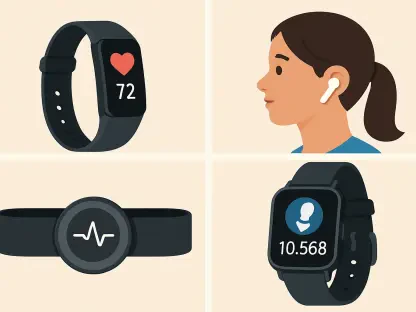The (already) classical Blue-ray optical storage system may avoid falling into obsolescence via a bold move.
Without much of a future left in multimedia storage and rendition, Blu-ray found its afterlife with the help of Facebook and a few other companies taunting the use of this technology in data-center storage. More precisely, Facebook adopted the method of storing its old data on Blu-ray, in what is called cold storage.
In the company’s search for more data storage capacity, Facebook considered and adopted this optical storage medium in addition to SSDs and other technologies because of its reduced energy consumption, limited to the moment of writing the data, without extending to the idle state of the Blue-ray cabinet.
Extremely efficient in saving energy and network traffic, this imported data storage method benefits data storage archives, and other companies like Hie Electronics or DISC group also introduced it, in combination with robot retrieval whenever data is needed and the Blu-ray disks need to be taken out of their racks for data to be written to a live server. More recent data shows how the Blu-ray savings are up to 50 percent at Facebook’s storage center from Oregon, while per storage rack the savings reach an 80 percent rate because of their zero power idle state.
A bit of Blue-ray history
April 2003 is the date of arrival for the first Blu-ray consumer device. Sony had followed through on two collaborative projects, UDO and DVR Blue, in partnership with Philips. Called “Blue” because of the blue laser diodes that surpassed the previous limits met by DVD formats, this new technology was backed by nine initial members gathered under the name of Blu-ray Disk Founders, later exchanged to Blue-ray Disk Association (BDA).
The first BD-ROM players (coming from Samsung) appeared only in 2006 and overlapped with the launching of HD DVD players – featuring the competitor technology: High Definition/Density Digital Versatile/Video Disc. A format war took place until HD DVD’s decline in 2008. Blu-ray won, and this technology continued developing, but on-demand videos threaten its role in what multimedia and film storage is concerned. This storage medium is just too expensive for movie consumers today to appreciate its qualities and opt for Blue-ray instead of other available technologies.
Blu-ray: the revival move
- The Optical Archive technology tested by Facebook in its storage centers flourished into a startup by the name of Optical Archive Inc. Described as a collection of giant robotic jukeboxes, the re-configured storage facilities initially counted 10,000 Blu-ray discs that held a petabyte of data.
- In the spring of 2015 Sony managed to acquire the Optical Archive startup, founded by Frank Frankovski, who used to work in Facebook’s OCP (Open Compute Project) – a project dealing with data center hardware design.
The idea of optical discs archives and optical discs libraries that store cold data is gradually making its way into mainstream. As consumers turn away Blu-ray storage in favor of Internet-streamed videos, this storage devices found their place with medium and large-scale storage.
- Once the new purpose was established, Sony and Panasonic announced enterprise storage specially tailored Blue-rays: having an initial capacity of 300Gb, with expected upgrade capacities of 500GB and 1TB, these announced 50 years lifetime optical discs archival discs are set to conquer enterprise storage.
- Fast forward to 2016 and we see how Panasonic unveils plans of commercializing this technology in the form of one terabyte of data Blu-ray discs. Entitled “freeze ray” because of its cold storage purpose, the storage concept was launched at Panasonic’s press conference from CES 2016.
How do big companies position themselves?
In short, with Facebook as example and pioneer, Sony as lead and Panasonic as the third big tech company to adopt this idea, it looks like Blu-ray revival into a datacenter storage technology is successful.
In what the individual disc capacity is concerned, another source mentions how Facebook expects the full deployment of second-generation 300GB archival discs to be ready by the end of 2016.
For those of you interested in controversies and in checking the opposite point of view, you may access here a comparative review that puts archiving to tape and hard disk in parallel with Blu-ray archiving, presenting a 10-year cumulative hardware cost analysis for 1PB of data. Their conclusion favors tape storage – nevertheless the study belongs to a company that deals in impact indicators and shock sensors (detecting mishandling for data storage devices and packages in transit), which strongly supports the idea of tape archiving.
Blu-ray archiving: the risk
The risk lays with this Blu-ray safeguarding operation itself. The companies that promote Blu-ray’s revival hold economic interests in this technology, and the possibility of pushing this technology merely out of holding a biased position is not to be overlooked.
Meanwhile other revolutionary technologies may develop faster than expected, seeing how seemingly futuristic means of storage such as the liquid storage or the glass disk storage are already a reality, running the risk of quickly surpassing the capacity or the benefits of Blu-ray archival.
In other words, the balance between the real advantages and the purported ones in Blu-ray archiving is a thin one when seen from afar. Only experienced professionals can decide for themselves whether the investment is worthy, and whether its present and future benefits are considerable enough. The success or failure of Blue-ray in cold storage is yet to be decided.









